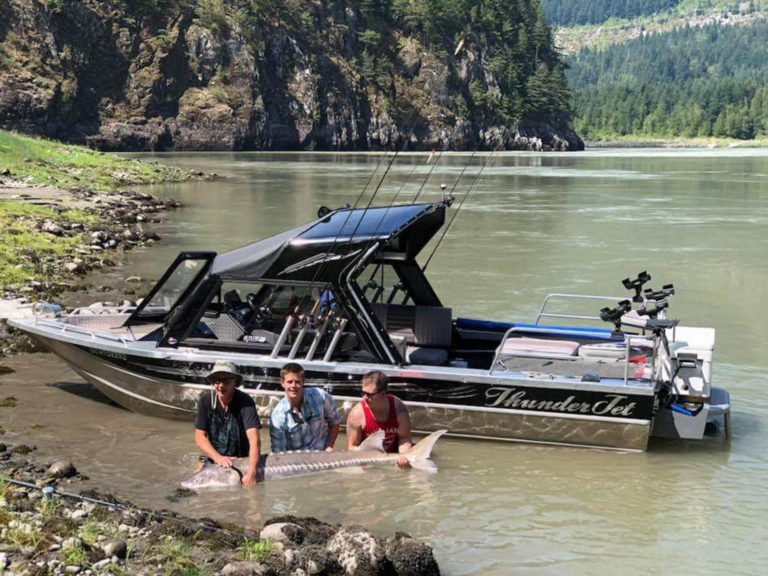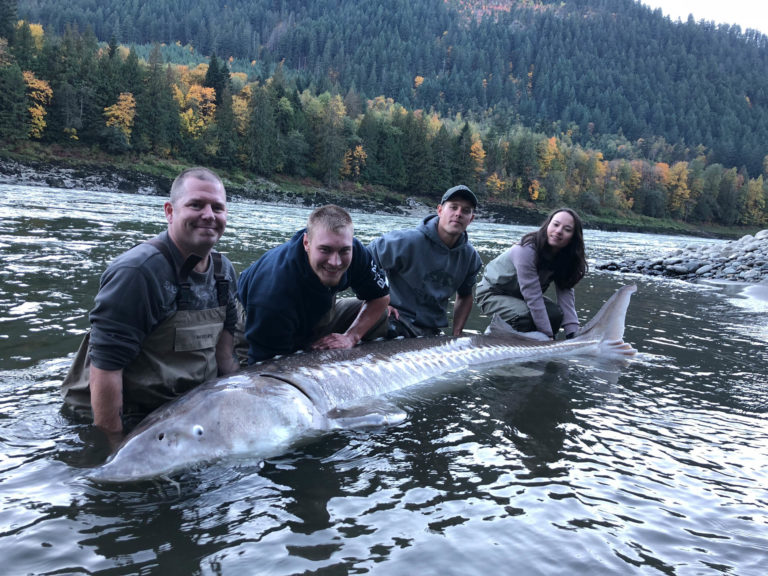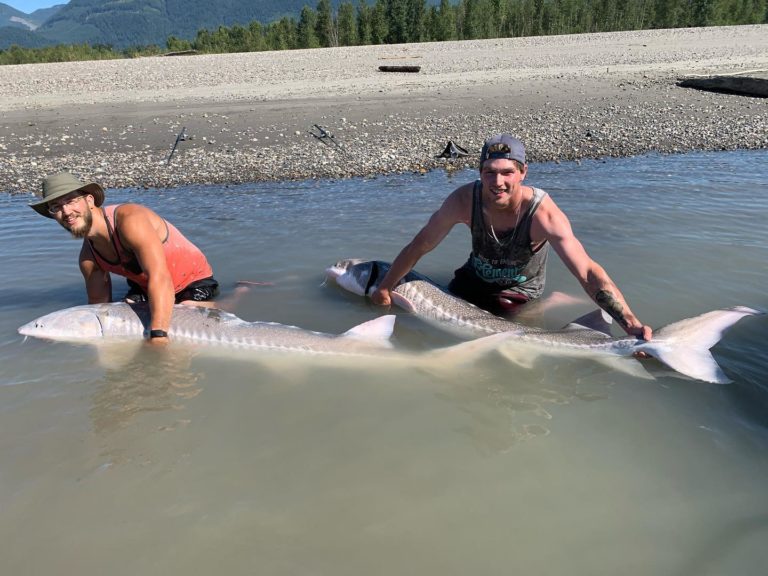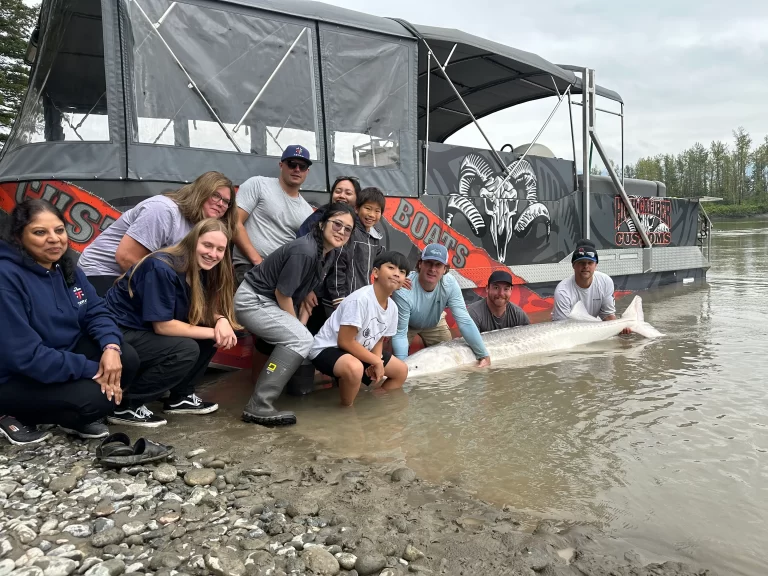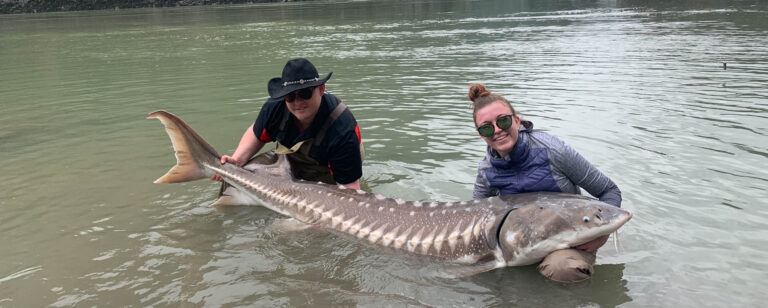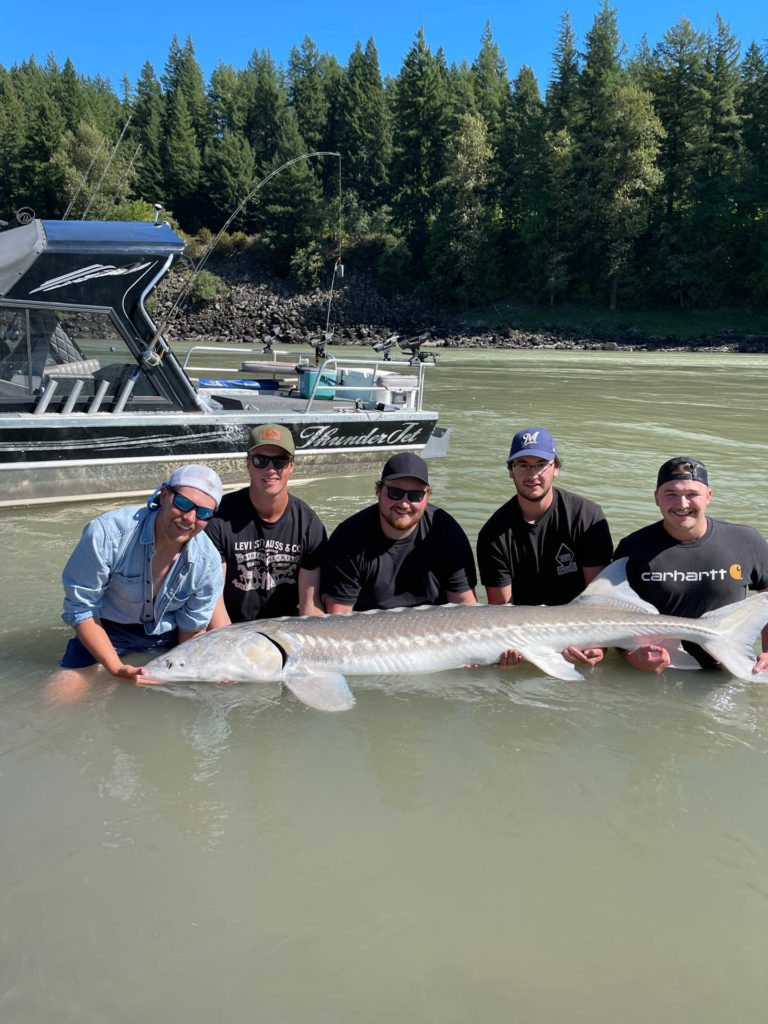Why White Sturgeon Conservation Matters: Preserving a 150-Million-Year-Old Species
White sturgeon is one of the oldest living fish species, dating back over 150 million years. These prehistoric giants have survived mass extinctions, ice ages, and shifting ecosystems, yet human activity threatens their survival today. The Fraser River in British Columbia is home to one of the largest remaining populations of white sturgeon, making it a key focus for conservation efforts.
Despite their resilience, these slow-growing, long-lived fish face increasing threats from habitat loss, pollution, overfishing, and climate change. Without intervention, future generations may never experience the thrill of seeing these incredible freshwater giants. That is why scientists, conservationists, and anglers work together to protect and restore sturgeon populations in the Fraser River.
The Biggest Threats to Fraser River Sturgeon and How Conservationists Are Responding
While white sturgeon populations in the Fraser River remain relatively stable, several serious threats put their long-term survival at risk:
- Habitat Destruction – Riverbank erosion, dam construction, and land development disrupt spawning and feeding areas.
- Poaching and Illegal Fishing – Despite strict catch-and-release regulations, some sturgeon are still illegally harvested, particularly for their prized caviar.
- Declining Water Quality – Agricultural runoff, industrial waste, and climate change alter water conditions, affecting sturgeon health and reproduction.
- Food Supply Disruptions – Changes in salmon populations impact the food chain, reducing available prey for white sturgeon.
- Gill Nets and Incidental Catch – While Indigenous communities have long relied on the Fraser River for sustenance and fishing rights are legally protected, unmonitored or improperly placed First Nations gill nets can pose a serious risk to white sturgeon. These large, non-selective nets are primarily used for catching salmon but can inadvertently entangle and injure sturgeon, sometimes leading to mortality. Conservationists are working alongside First Nations groups to develop alternative fishing methods and better net management strategies to reduce unintended harm to sturgeon populations.
In response, government agencies, conservation groups, and research institutions have developed monitoring programs, habitat restoration projects, and stricter regulations to address these challenges and ensure the species’ survival. Collaboration with First Nations fisheries is also a key part of conservation efforts, helping to balance traditional fishing practices with sustainable solutions to protect Fraser River sturgeon.
How Tagging Programs Help Track and Protect Fraser River Sturgeon
Tagging programs are crucial in monitoring white sturgeon populations, allowing scientists to track their growth, movement, and health over time. The Fraser River Sturgeon Conservation Society (FRSCS) leads the way with one of the world’s most extensive sturgeon tagging programs, providing valuable data that inform conservation strategies.
Two Primary Tagging Methods Used by Researchers:
- PIT (Passive Integrated Transponder) Tagging – A tiny microchip inserted under the skin allows scientists to track individual sturgeon throughout their lifetime.
- Acoustic Telemetry – Special tags transmit signals to underwater receivers, providing real-time data on sturgeon migration patterns and habitat use.
Since the Fraser River tagging program started, over 70,000 white sturgeon have been tagged and monitored, leading to critical insights about population trends and conservation priorities.
Restoring Sturgeon Habitat: Key Projects and Their Impact
One of the most effective ways to support sturgeon conservation is by restoring critical habitats along the Fraser River. Conservationists have identified key areas where habitat restoration efforts have the most significant impact:
- Spawning Habitat Restoration – Scientists are rebuilding gravel beds and deep pools, ensuring sturgeon have safe places to lay eggs and spawn naturally.
- Water Flow Management – Collaboration with hydroelectric companies helps maintain natural water flow patterns, preventing the loss of spawning sites.
- Pollution Reduction Programs – Conservation groups are working with local industries and farmers to reduce contaminants entering the river.
These efforts are already producing results, with higher juvenile sturgeon survival rates reported in several restored habitats.
The Best Catch-and-Release Techniques to Protect Sturgeon
Since all Fraser River sturgeon fishing is strictly catch-and-release, anglers are essential in minimizing stress and injury to these massive fish. Following best practices helps ensure that sturgeon remain healthy after release:
- Use Barbless Hooks – These reduce injury and allow easier, safer hook removal.
- Minimize Air Exposure – Keep sturgeon in the water as much as possible during handling.
- Support Their Weight – Always cradle large sturgeon properly to prevent internal damage.
- Follow Local Regulations – Stay updated on British Columbia fishing regulations to avoid unintentional harm to the population.
Educating anglers on proper handling is crucial for long-term sturgeon survival. Many fishing charters in the Fraser River region provide training on ethical catch-and-release techniques to ensure sturgeon conservation remains a priority.
Meet Pig Nose: The Legendary Fraser River Sturgeon That Keeps Making History
One of the most famous sturgeon in the Fraser River tagging program is Pig Nose, a massive 10-foot white sturgeon instantly recognizable due to an old snout injury. First tagged decades ago, Pig Nose has been caught and released multiple times, helping scientists gain insights into sturgeon growth, longevity, and migration.
This living legend is a perfect example of why conservation matters—thanks to strict catch-and-release laws and responsible angling, Pig Nose thrives in Fraser River waters, inspiring anglers and conservationists alike.
How Anglers and the Public Can Support Sturgeon Conservation Efforts
Protecting Fraser River’s white sturgeon requires community involvement. Here is how anglers and the general public can contribute:
- Report Tagged Sturgeon – If you catch a tagged sturgeon, record the tag number and report it to conservation authorities.
- Participate in Sturgeon Research Programs – Many organizations offer volunteer opportunities to assist with sturgeon tagging and habitat monitoring.
- Donate to Conservation Groups – Organizations like the Fraser River Sturgeon Conservation Society rely on funding for research and restoration projects.
- Spread Awareness – Educate others about the importance of sturgeon conservation and the role of ethical angling.
Final Thoughts
White sturgeon are prehistoric giants that have thrived in Fraser River waters for millions of years, but their future is now in our hands. Through scientific research, habitat restoration, responsible angling, and community involvement, we can help protect and preserve this incredible species for generations.
By supporting tagging programs, following ethical fishing practices, and promoting conservation initiatives, we can ensure that future generations continue to experience the thrill of encountering Fraser River’s legendary giants.
Get Involved
Interested in helping protect Fraser River sturgeon?
- Visit the Fraser River Sturgeon Conservation Society’s website to learn more about volunteer opportunities and conservation initiatives.
- Join a guided conservation tour to see sturgeon research in action.
- Donate to support ongoing research, tagging programs, and habitat restoration.
Together, we can ensure that Fraser River’s white sturgeon continues to thrive for generations.
Frequently Asked Questions (FAQ)
1. Why is white sturgeon conservation important?
White sturgeon is one of the longest-living and largest freshwater fish species, but their populations face habitat destruction, pollution, and overfishing threats. Conservation efforts help ensure their survival, maintain ecosystem balance, and allow future generations to experience these prehistoric fish.
2. How does the sturgeon tagging program help conservation efforts?
Tagging programs provide valuable data on sturgeon growth rates, migration patterns, and health. This information helps conservationists monitor populations, identify risks, and implement targeted protection strategies.
3. Can the public participate in sturgeon conservation?
Yes. The public can support conservation by reporting tagged sturgeon, participating in volunteer research programs, donating to conservation organizations, and spreading awareness about responsible angling and habitat protection.

